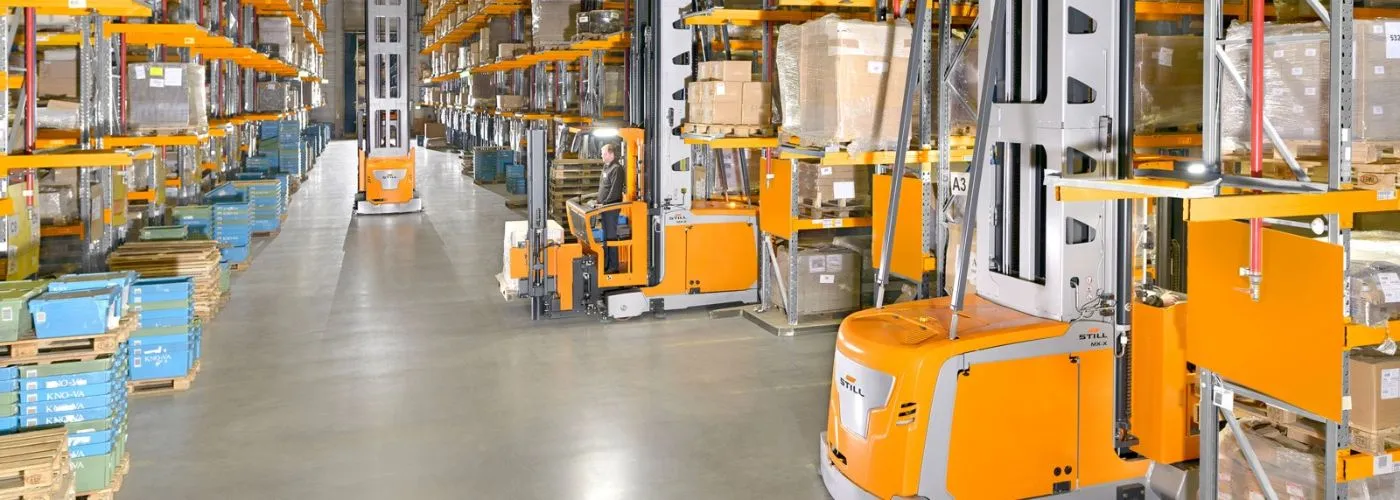Super Flat Floor Leveling Challenge for VNA Warehouse
Overcoming the VNA Warehouse Leveling Challenge with Super Flat Floors
Introduction
In the rapidly evolving world of warehousing and logistics, the demand for increased efficiency and productivity has never been greater. In response to this, Very Narrow Aisle (VNA) warehouses have gained popularity due to their space-saving capabilities and high storage density. However, operating VNA warehouses comes with a unique challenge: achieving precise leveling to ensure seamless and safe material handling. In this blog post, we will explore the concept of Super Flat Floors or Industrial Floor Coatings and how they address the leveling challenge in VNA warehouses, providing businesses with a competitive edge in their operations.
1. Understanding the VNA Warehouse Levelling Challenge
VNA warehouses are characterized by their narrow aisles and tall racking systems, allowing for maximum storage capacity. This design demands pinpoint accuracy when it comes to leveling the warehouse floor. Even the slightest variation in floor flatness can lead to operational inefficiencies, equipment damage, and potential safety hazards. Forklifts and other material handling equipment require stable surfaces to navigate narrow aisles and lift heavy loads safely. Hence, achieving an adequate level of flatness is crucial to optimizing VNA warehouse operations.
2. The Role of Super Flat Floors
Super Flat Floors, as the name suggests, refer to surfaces that exhibit an exceptionally high level of flatness and smoothness. These floors are engineered using advanced techniques, such as laser-guided technology and high-quality concrete mixes, to achieve an extremely level surface. The flatness of a floor is typically measured using the F-number system, and Super Flat Floors aim for F-numbers well below the industry standard.
3. Advantages of Super Flat Floors in VNA Warehouses
- Enhanced Safety: With Super Flat Floors, the risk of accidents caused by equipment imbalance and instability is minimized. This ensures a safer working environment for warehouse personnel and reduces the likelihood of costly damages to stored goods.
- Increased Productivity: Super Flat Floors enable material handling equipment to operate at optimal speeds, reducing travel time and increasing overall productivity. Faster and smoother operations result in quicker order fulfillment, translating to satisfied customers and better business performance.
- Reduced Maintenance Costs: Traditional warehouse floors may experience more wear and tear due to uneven surfaces, leading to increased maintenance expenses. Super Flat Floors, on the other hand, require less frequent repairs and have a longer service life, ultimately saving costs in the long run.
- Better Storage Capacity: The precise leveling offered by Super Flat Floors allows for more accurate and efficient use of available space in VNA warehouses. This can lead to increased storage capacity, enabling businesses to accommodate a larger inventory without expanding the facility.
4. Implementing Super Flat Floors
Achieving a Super Flat Floor requires careful planning and execution during the warehouse construction phase. Engaging a reputable flooring specialist with experience in VNA warehouses is essential. The process involves meticulous floor preparation, the use of advanced leveling technologies, and stringent quality control to meet the required flatness criteria.
Conclusion
In conclusion, the implementation of Super Flat Floors presents a powerful solution to the leveling challenge faced by VNA warehouses. By providing unparalleled flatness and smoothness, these floors create a strong foundation for efficient and safe material handling operations. Businesses that invest in Super Flat Floors can expect increased productivity, reduced maintenance costs, and improved overall warehouse performance, ultimately gaining a competitive edge in the dynamic world of logistics and warehousing.




